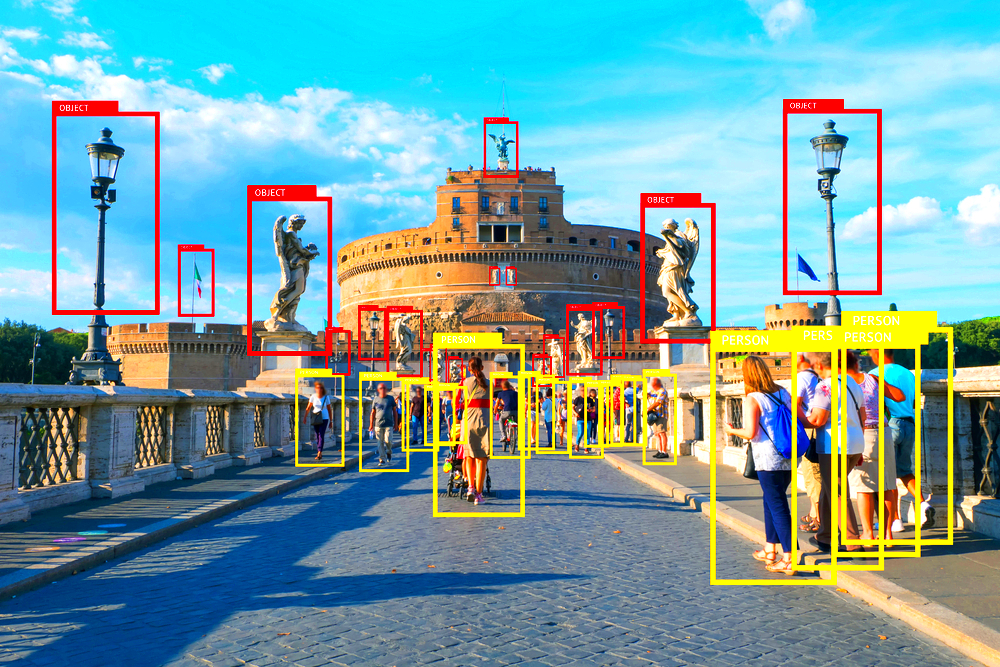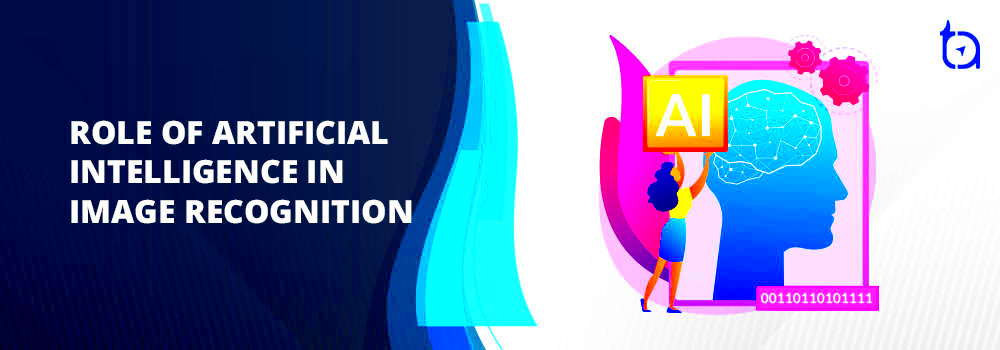AI used for image recognition is one facet of artificial intelligence that concentrates on hence identification, images are processed basically. This can enable computers to understand and interpret what is on a picture as people do. Recently, with the rise of deep learning and neural networks, this has been made possible in more accurate and efficient ways than before. The technology finds its application in all kinds of things including but not limited to; facial recognition on social media platforms, object detection systems in autonomous vehicles among others.Because of this, image recognition AI has become not just another marvel of science and technology, but also something which plays an important role in our everyday lives.
Importance of Image Recognition in Today's World

Picture acknowledgment is changing businesses through improving output and offering inventive answers. The significance of this is presented as follows:
- Healthcare: Image recognition helps doctors analyze medical images, improving diagnosis accuracy.
- Retail: Businesses use image recognition for inventory management and personalized shopping experiences.
- Security: Facial recognition technology is widely used in surveillance systems to enhance safety.
- Autonomous Vehicles: Self-driving cars rely on image recognition to navigate safely and efficiently.
Such instances indicate that artificial intelligence for image recognition is not only an interest but actually a primary component of contemporary innovation thus rendering processes more intelligent and effective.
Also Read This: Mastering Image Cropping with AI Tools
Key Components of Image Recognition AI
Several important components are necessary for developing a successful image recognition system. Anyone interested in pursuing this area must appreciate these factors:
- Data: High-quality image datasets are essential for training models. The more diverse the data, the better the model will perform.
- Algorithms: Various algorithms, like convolutional neural networks (CNNs), are used for analyzing images. They help extract features and recognize patterns.
- Training: Training the model involves feeding it images and allowing it to learn from these examples. This process fine-tunes the model’s accuracy.
- Validation: After training, validating the model is crucial. This step tests how well the model performs on unseen data.
- Deployment: Finally, deploying the model into applications makes the AI accessible for real-world use.
In terms of constructing an image recognition AI that is specifically designed for certain purposes and enables efficiency, laying emphasis on these aspects will augment its efficacy.
Also Read This: Saving a Sticker as an Image
Steps to Build Your Own Image Recognition AI
To build an image recognition AI of your own might sound like a hard task, however, if you break it down to smaller steps the process becomes less intimidating. The following is an easy guide that can help initiate the journey:
- Define Your Purpose: Start by clarifying what you want your image recognition AI to do. Is it for identifying objects, classifying images, or recognizing faces?
- Gather Data: Collect a dataset that suits your purpose. You can find free datasets online or create your own. Ensure the data is diverse and labeled correctly.
- Choose Your Algorithm: Select an algorithm based on your needs. Popular choices include Convolutional Neural Networks (CNNs) for their effectiveness in image processing.
- Preprocess the Data: Clean and prepare your data. This might include resizing images, normalizing pixel values, or augmenting data to improve model robustness.
- Train the Model: Feed your preprocessed data into the chosen algorithm. Monitor the training process to avoid overfitting or underfitting.
- Test the Model: Once trained, test your model with a separate dataset to evaluate its accuracy and performance.
- Refine and Optimize: Based on test results, refine your model by adjusting parameters or retraining with more data.
- Deploy Your Model: Finally, deploy your trained model into an application, making it accessible for real-world use.
Thus, by adhering to the following procedures, it would be possible for you to appropriately create an image recognition artificial intelligence that meets your peculiar desires.
Also Read This: Tracing an Image on Procreate: A Step-by-Step Guide
Choosing the Right Tools and Technologies
The difference of success in your undertaking could lay on the tools and technologies that one chooses to use in creating an image recognition AI. Here are some of the major issues to consider:
- Programming Language: Python is the most popular choice for AI development due to its simplicity and extensive libraries.
- Frameworks: Choose frameworks that suit your needs. TensorFlow and PyTorch are widely used for their flexibility and community support.
- Image Processing Libraries: Libraries like OpenCV can help with image manipulation and preprocessing tasks.
- Hardware: Invest in suitable hardware. A powerful GPU can significantly speed up the training process for your AI model.
- Cloud Services: Consider using cloud platforms like Google Cloud or AWS for scalable resources and easy deployment options.
In a proper selection of tools and technologies, you will be able to optimize your development process and improve the efficiency of your image recognition AI.
Also Read This: Stunning Graphics for Wedding Planners with VectorStock
Training Your Image Recognition Model
Training your model for recognizing images is an important step in the process. This is the place where it learns how to identify patterns and characteristics in pictures. Below are optimal ways to go about it:
- Split Your Data: Divide your dataset into three parts: training, validation, and testing. A common split is 70% for training, 15% for validation, and 15% for testing.
- Data Augmentation: To improve your model’s robustness, apply data augmentation techniques. This includes rotating, flipping, or adjusting the brightness of images.
- Set Up the Training Process: Define hyperparameters such as learning rate, batch size, and the number of epochs. These parameters significantly impact your model's performance.
- Monitor Training: Track your model's performance using metrics like accuracy and loss. Use validation data to ensure it generalizes well.
- Adjust as Needed: If you notice overfitting (where the model performs well on training data but poorly on validation data), consider techniques like dropout or regularization.
- Test the Model: Once training is complete, evaluate your model on the test set to see how well it performs on unseen data.
If you have right kind of training, the model for recognizing images will be an incredibly strong device that can make errorless forecasts – all these will depend on how much you involve visual input into it.
Also Read This: A Look at Small Tech Companies Making a Huge Impact in the USA
Testing and Improving Your AI Model
After completing training your image recognition model, the next important thing that needs to be done is testing it so that you may ascertain its performance in situations that are similar to those that occur in the outside world. Testing is principally concerned with determining how accurate and reliable the model being tested is. Some of the effective ways through which a developer can test and enhance the performance of their model include:
- Use a Separate Test Dataset: Always test your model with a dataset that it hasn't seen during training. This helps you evaluate its generalization ability.
- Measure Performance Metrics: Common metrics for image recognition include accuracy, precision, recall, and F1 score. Understanding these metrics helps gauge your model's effectiveness.
- Confusion Matrix: Utilize a confusion matrix to visualize the performance of your model. It shows how many correct and incorrect predictions were made, giving insights into specific areas needing improvement.
- Gather Feedback: If possible, gather feedback from users or stakeholders who can provide insights on how the model performs in practical applications.
- Iterate and Improve: Based on your findings, go back to your model. You may need to adjust hyperparameters, retrain with more data, or even choose a different algorithm if necessary.
- Continuous Learning: Consider implementing mechanisms for continuous learning. This allows your model to adapt and improve over time as it processes new data.
Through rigorous evaluation and modification, accuracy and efficiency will remain with your image recognition AI in performing its functions.
Also Read This: Tips for You to Get Thumbnail from YouTube Video Quickly and Easily
Frequently Asked Questions
As you embark on creating image recognition AI, you probably have a multitude of inquiries in mind. Here are few of them that people usually ask along with their corresponding responses.
- What is image recognition AI?
- Image recognition AI is a technology that enables computers to identify and process images, similar to how humans interpret visual information.
- What programming languages are best for image recognition?
- Python is the most popular choice due to its simplicity and the availability of powerful libraries like TensorFlow and PyTorch.
- How much data do I need to train my model?
- The amount of data required depends on the complexity of the task. Generally, more data leads to better performance, but quality matters as well.
- What if my model is not performing well?
- If your model underperforms, consider revisiting your dataset, trying different algorithms, or adjusting your training process and parameters.
- Can I use pre-trained models?
- Yes, pre-trained models can save time and resources. You can fine-tune them on your dataset for better results.
It is important to note that these frequently asked questions (FAQs) help clear common concerns and provide a basis for constructing an effective image recognition AI which means that normally people will ask similar questions over and over again in most cases.
Conclusion on Building Image Recognition AI
Picturing yourself constructing an AI capable of recognizing images is such an enthralling endeavor since it draws together ingenuity, technical expertise and issue resolution. You can make a strong tool that addresses personalized needs by understanding the basics, following regulated procedures and continually testing and refining your model. Always keep in mind that it’s all about beginning small, taking lessons from each stage and being open-minded for some iterations on how you do things. The scope for application of image recognition AI is broadest and most promising whether as an enhancement of security systems, improvement of retail processes or the creation of novel applications. Therefore, equipe yourself well and commence building anything outstanding!

 admin
admin








